Ben’s proclivity for “culture bending” is only matched by Peta. This tendency to “go native” is something we both gravitate toward.
Indonesia is a mostly Muslim country (in fact the largest majority Muslim nation in the world, far surpassing the populations of Middle Eastern muslim populations, with 180 Million adhering to Islam).
So as Ben goes sarong, so does Peta consider the Hijab. Hijab is the Arabic word for (head) cover.
INDONESIA
There are several styles of hijab. The Shayla, al-amira and the Khimar. The Khimar is much longer and “heavier”. This is the version that sometimes is worn with just the woman’s eyes showing. There is a current wave of near-hysteria in the west, confounding a traditional muslim head dress that is accepted as the norm in a 1.2Billion person global community of muslims, and the widespread fear in the west that is associated with terrorism. Such is this hysteria that communities in the west, France for instance, has started to prohibit the wearing of the hijab. It is a bizarre and shameful convergence of distinct topics that is so distant from day to day reality in the muslim world, that it’s laughable. Except of course that it is a serious matter and that westerners fail to recognize that their “discomfort” with the hijab is mis-placed and merely reflects a broad lack of familiarity with a global population that numbers over 1 billion people.
Yogayakarta
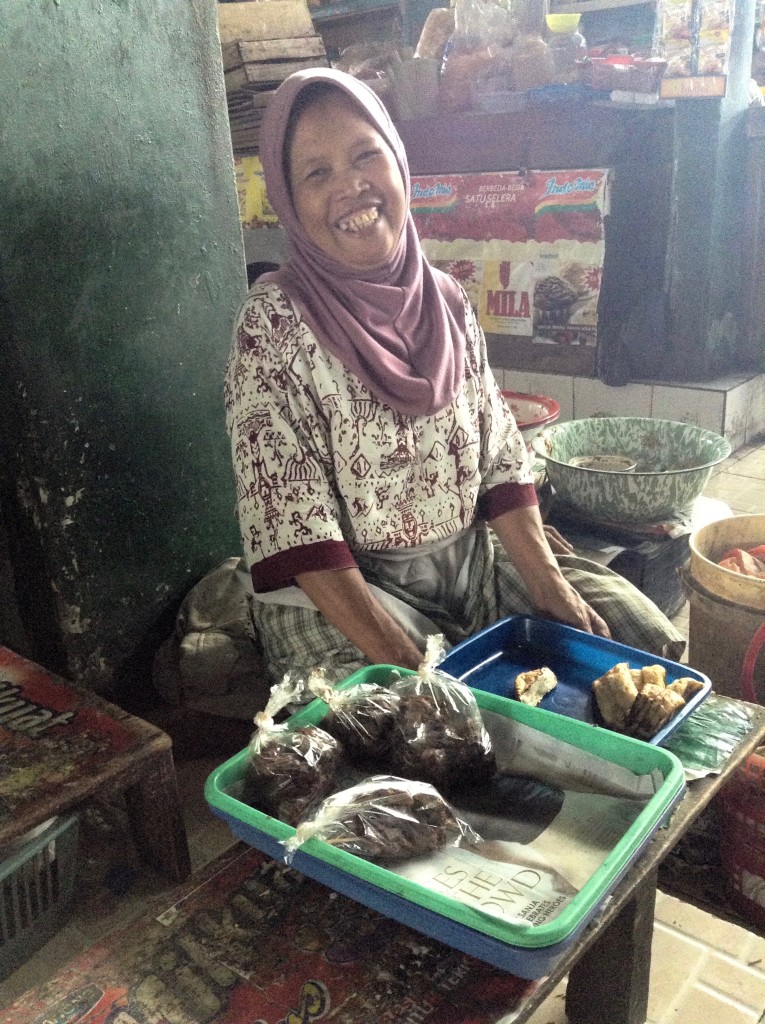
The traditional headscarf is worn by most women, and this type is known as a “shayla” and is a rectangular scarf that is wrapped loosely around the head attached or pinned at the shoulders.
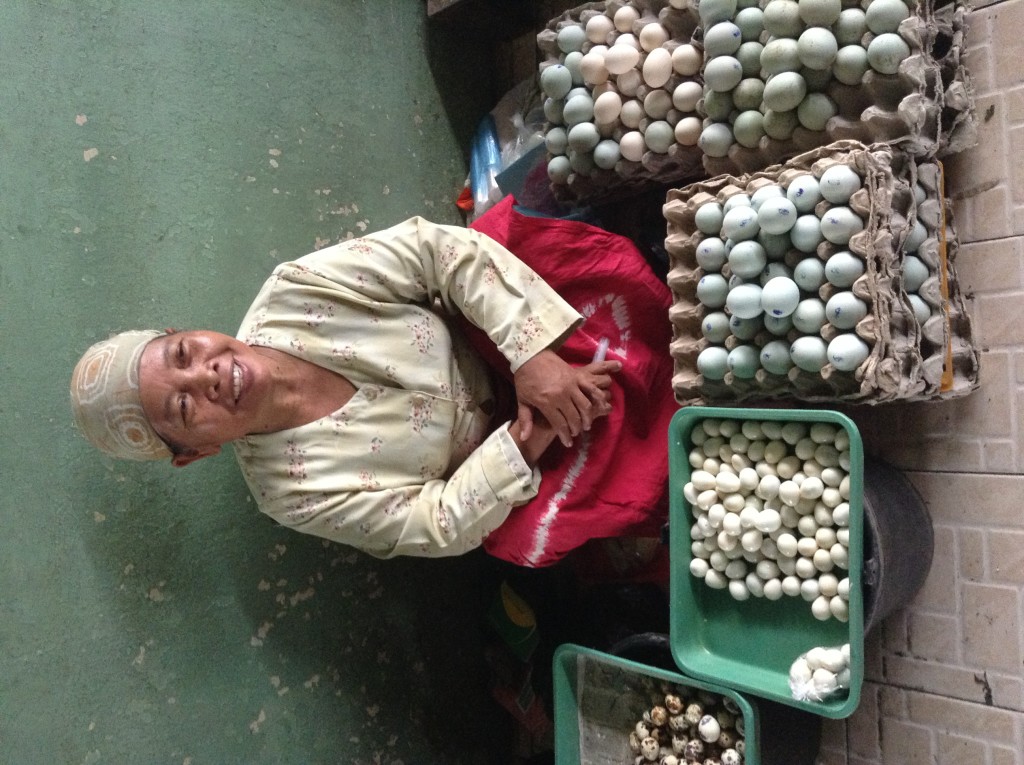
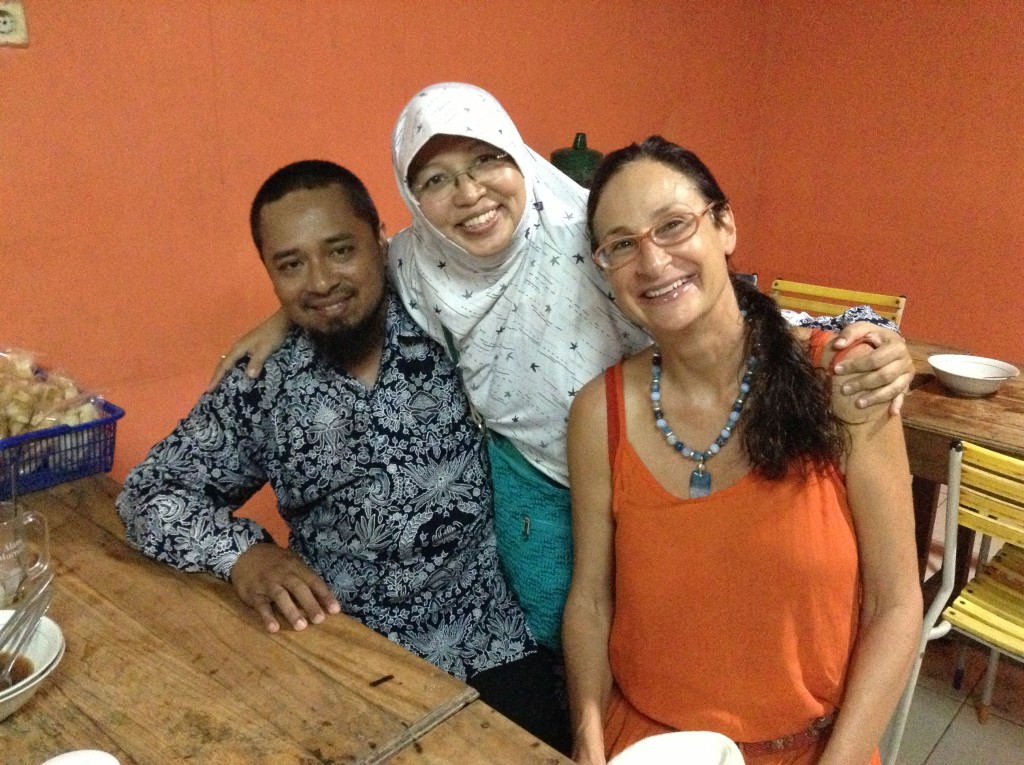
This woman is a sex-education professional who works with the ministry of health and education. We met in a small restaurant and easily struck a conversation on our first night in Yogyakarta. She wears the full size Hijab.
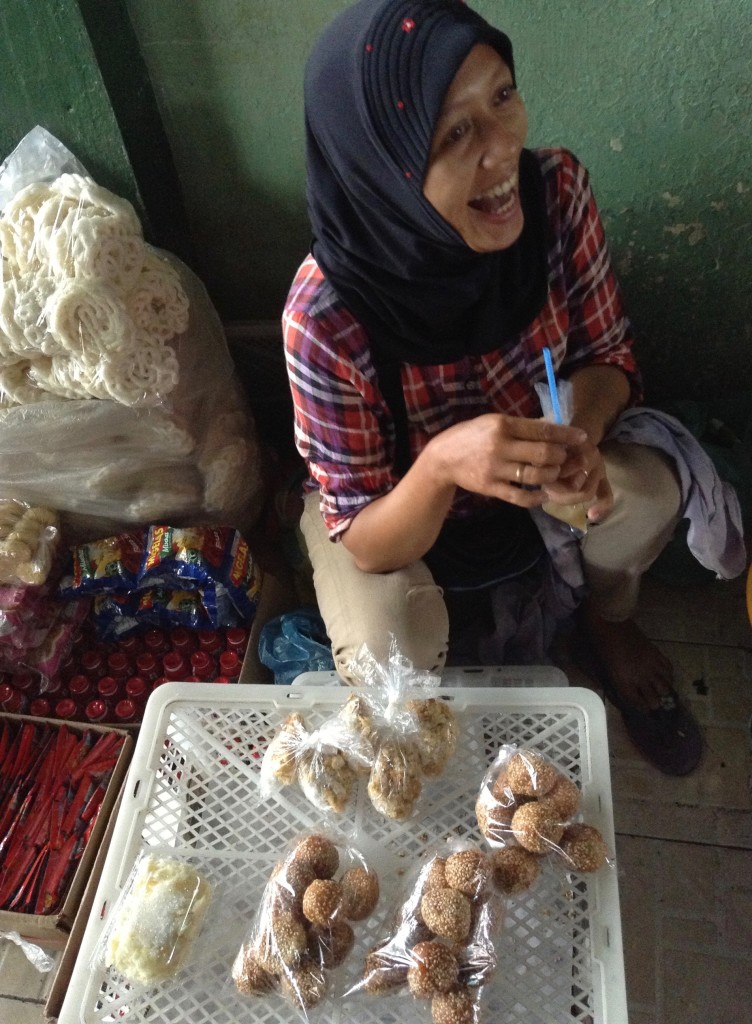
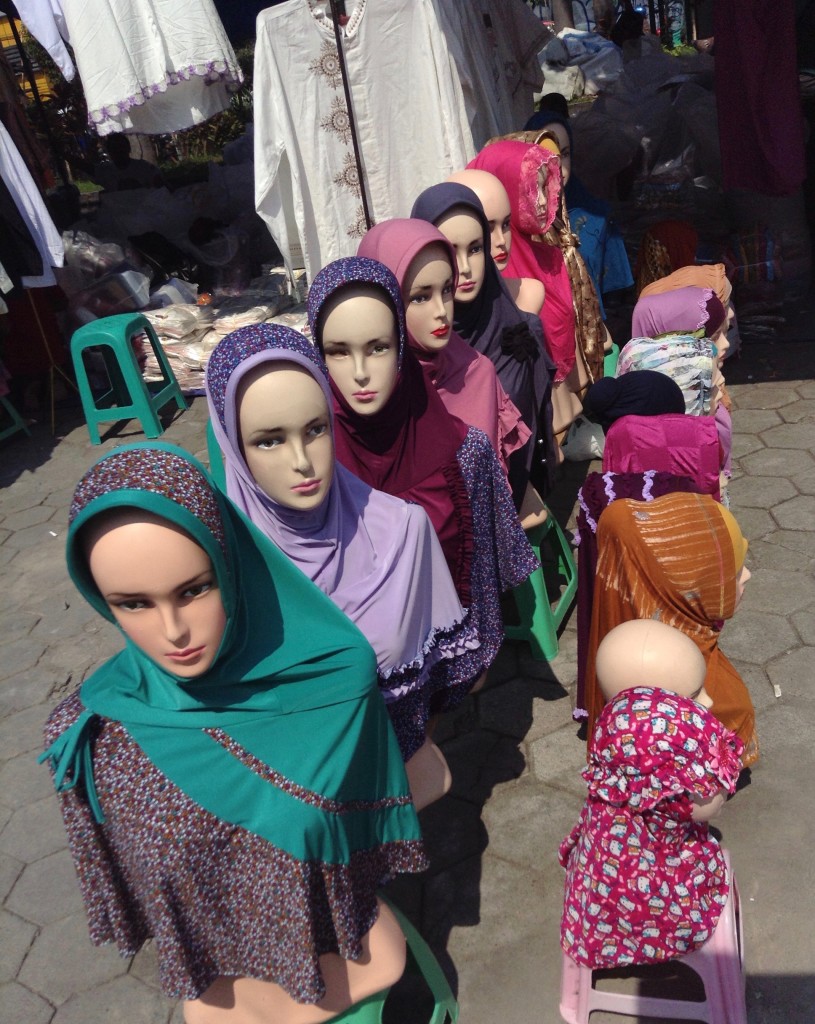
The traditional purpose of the Islamic head cover, which we generally refer to with the broader term “hijab” is to create an attitude of modestly and attract as little attention as possible. Today however the hijab is also a fashion statement and there are many different styles and colors to choose from.
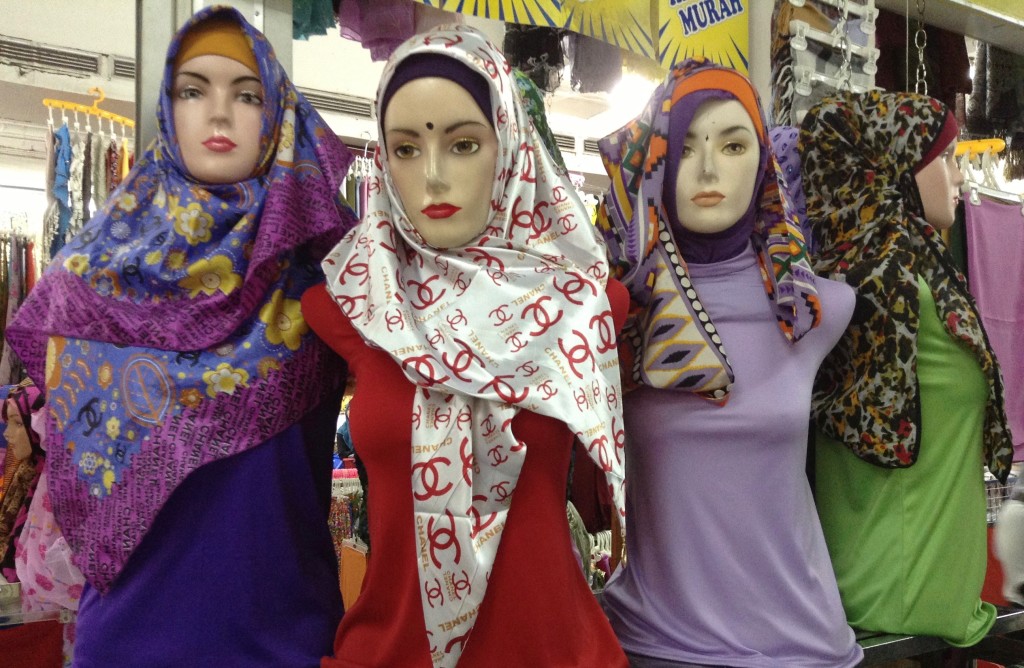
Even for women prone to wearing French high fashion, there is a Chanel hijab.
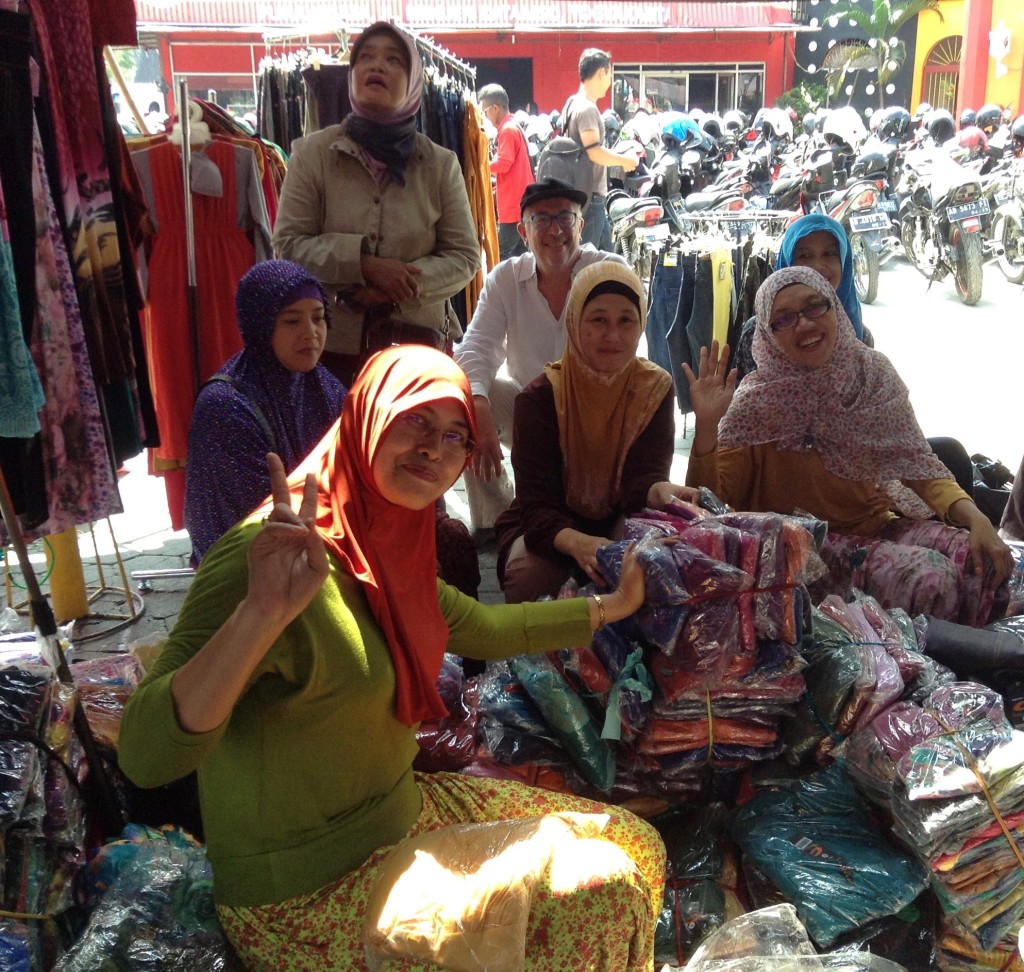
A group of women (and Ben) at the market place, gather around as they watch me being shown hijabs and dresses by one of the vendors (woman in front with orange shayla.)
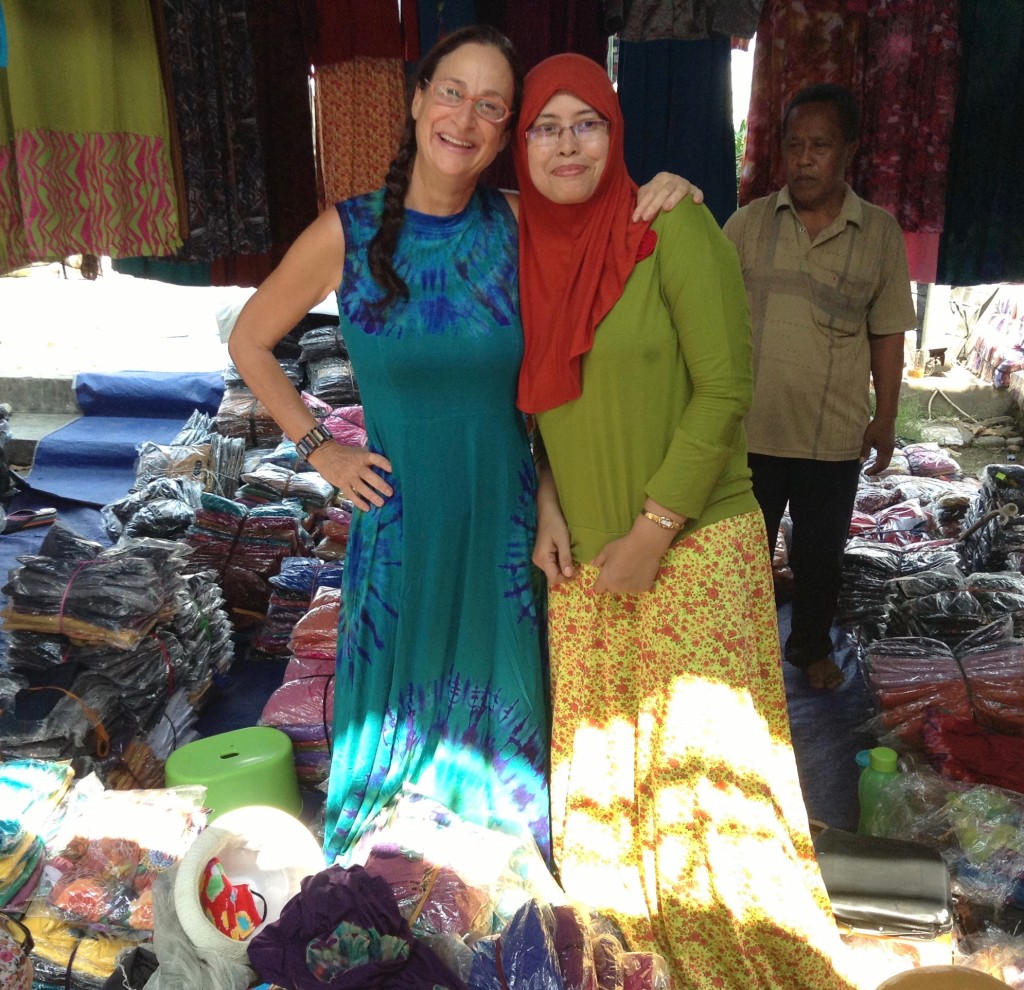
Incremental transition… first the dress….
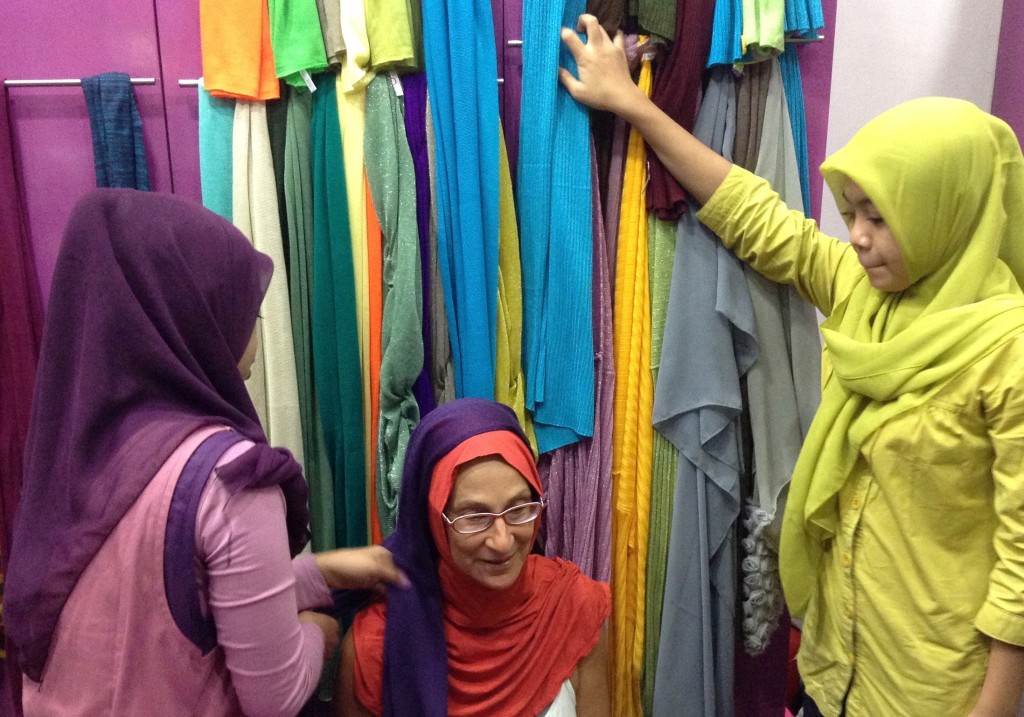
Then the hijab.. At first it feels and looks rather like a nuns “habit”.

“I like this one though. Could definitely wear this!”
INDIA
Rajasthan
Head covering is not just a cultural feature of muslim societies. Peta observes, and follows, a variant, in India’s Rajasthan region.
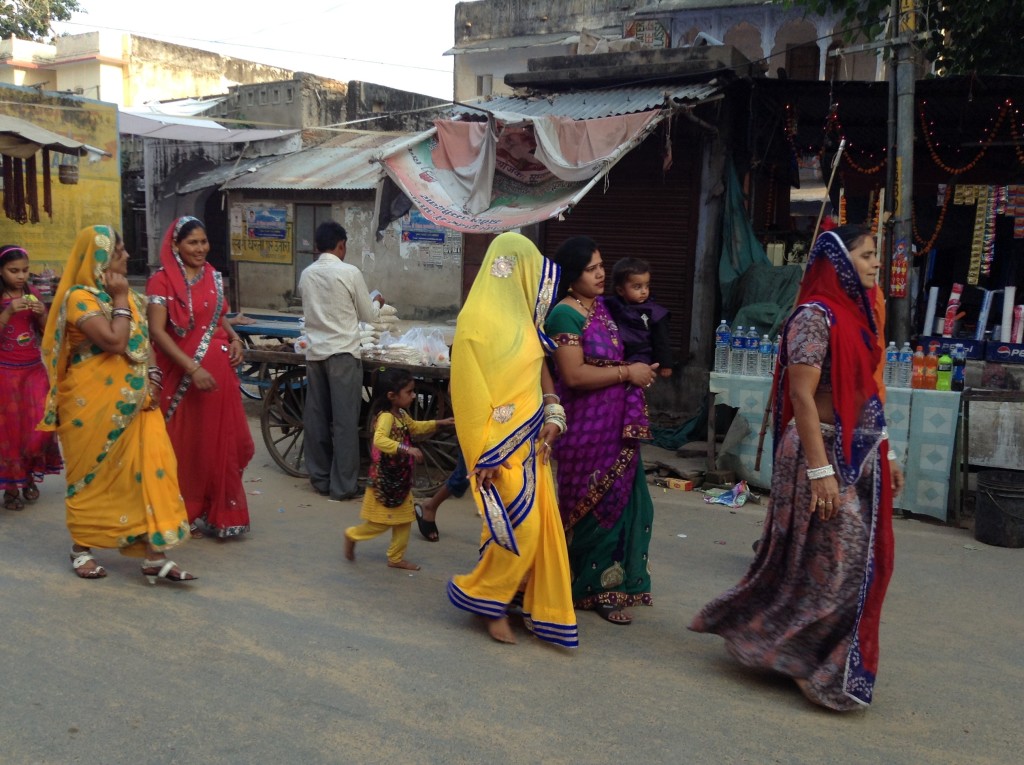
The sari of course, including head covering called a “ghoonghat”. Generally women use the loose end of a sari or a long scarf known as a “dupatta.”
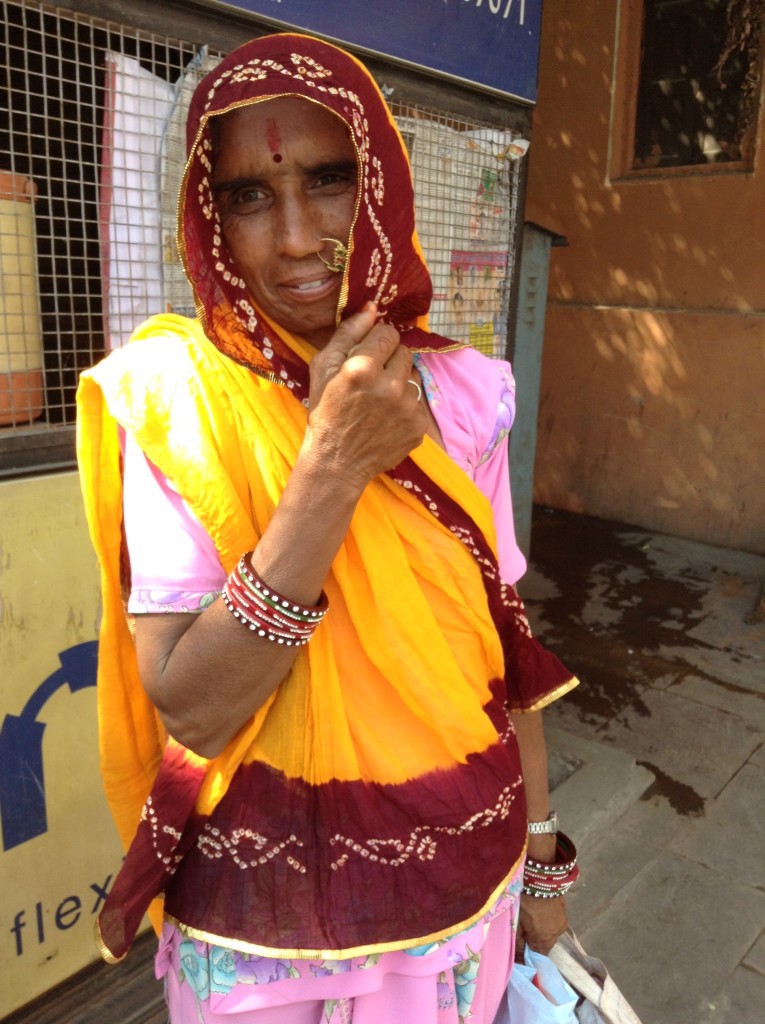
This woman has the bright combination of colors in her sari and head covering, that are typical in Rahjistan.
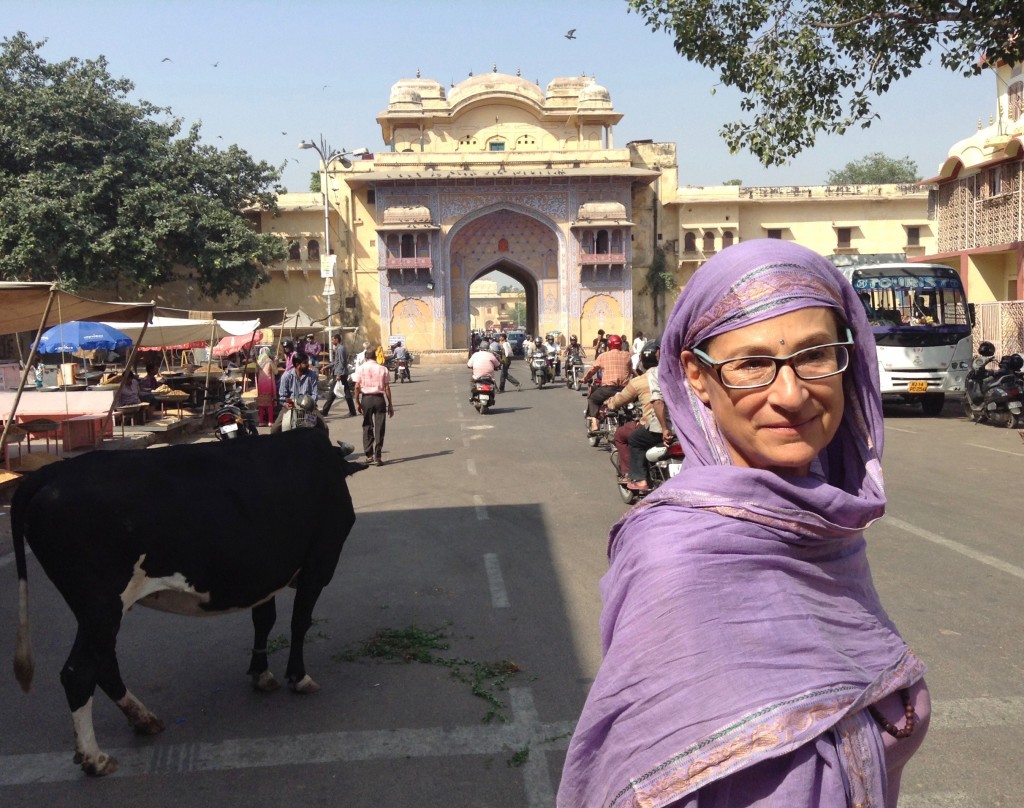
When in India.. it feels more comfortable to do as Indian women do…. And it certainly is a barrier breaker.
MYANMAR
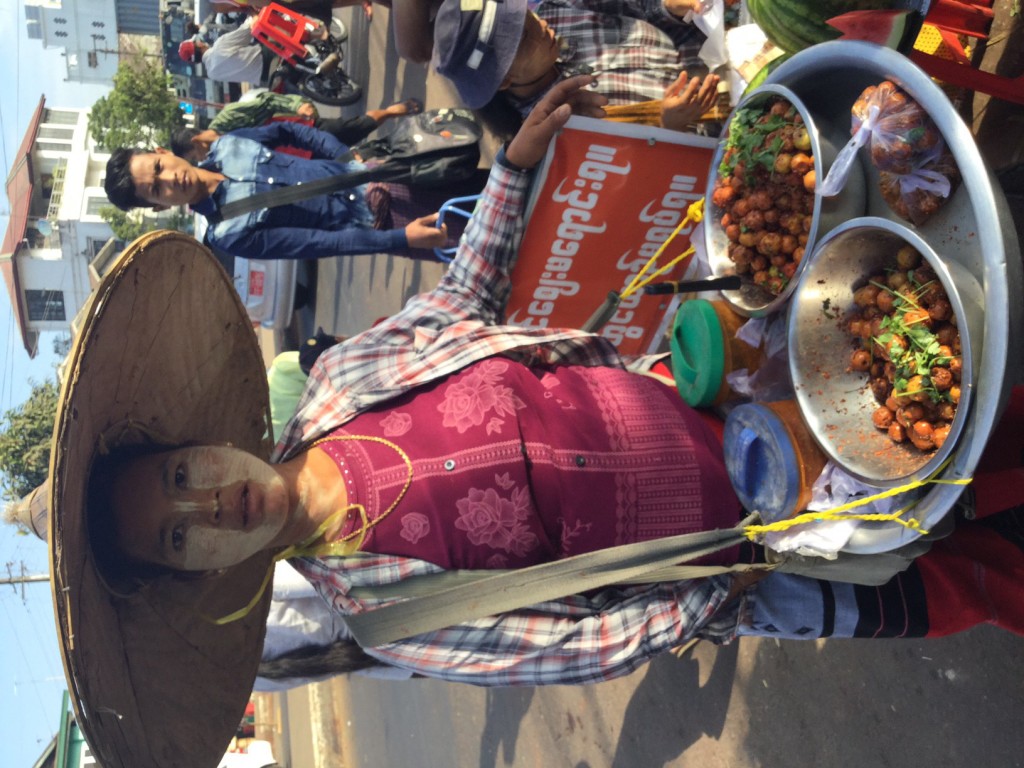
In Myanmar women and girls (and to a lesser extent some males) use a natural paste made from the bark of a tree, as a sunblock, known as Thanaka. Thanaka is a distinctive feature of the culture of Myanmar.
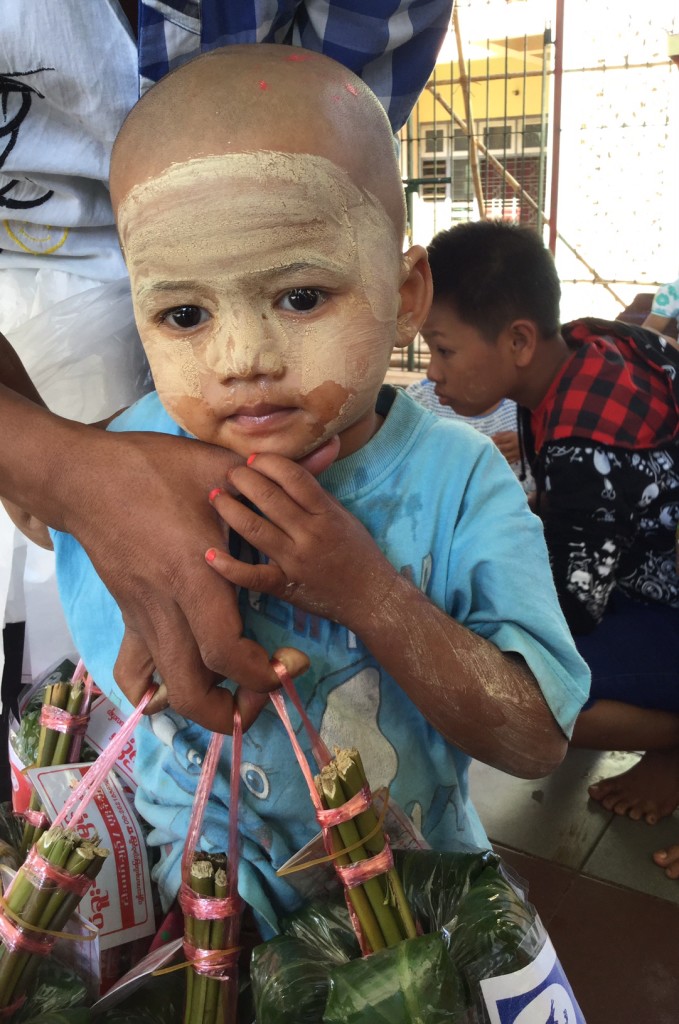
A little girl with thanaka covering her whole face. Not at all unusual. However some women create designs or just cover the cheeks.
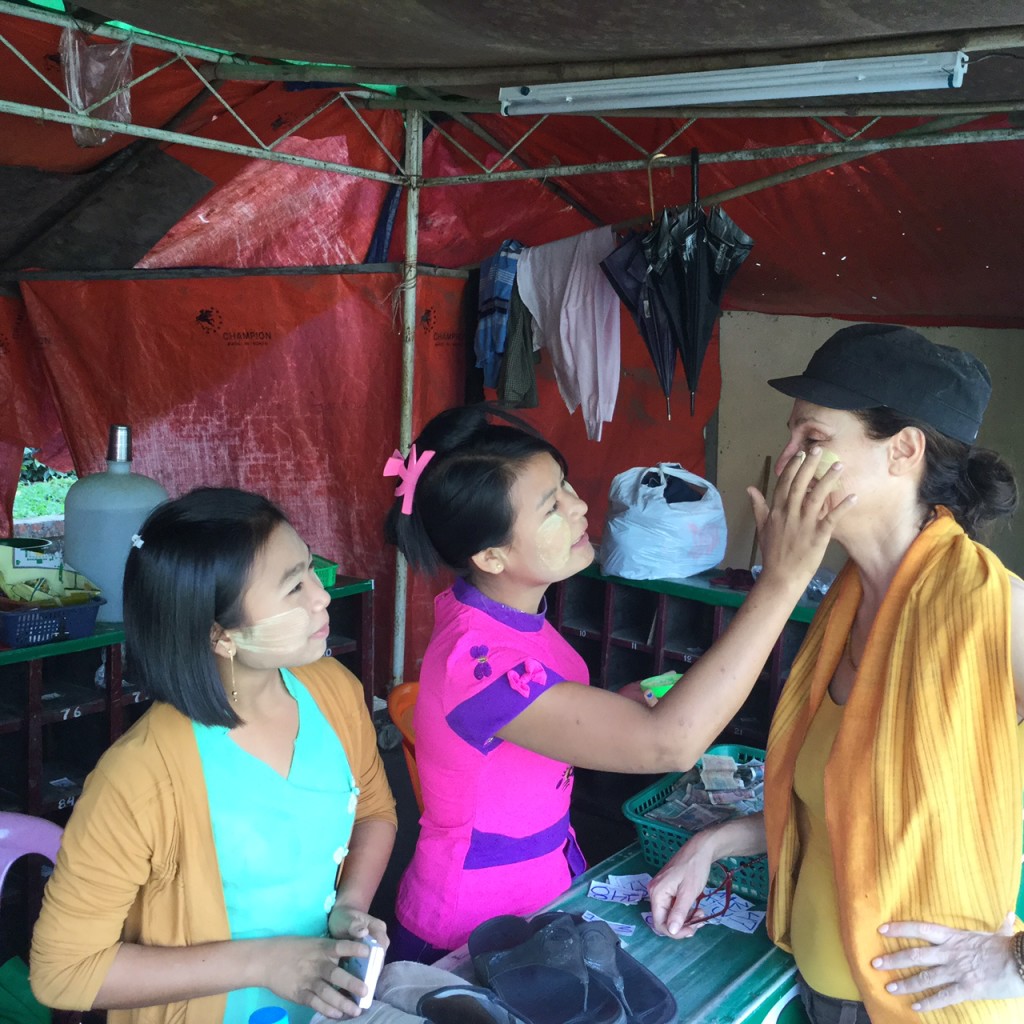
When two girls offer to improve Peta’s looks by applying Thanaka, she readily agrees, to their delight. Thereafter, Peta gets approving nods.
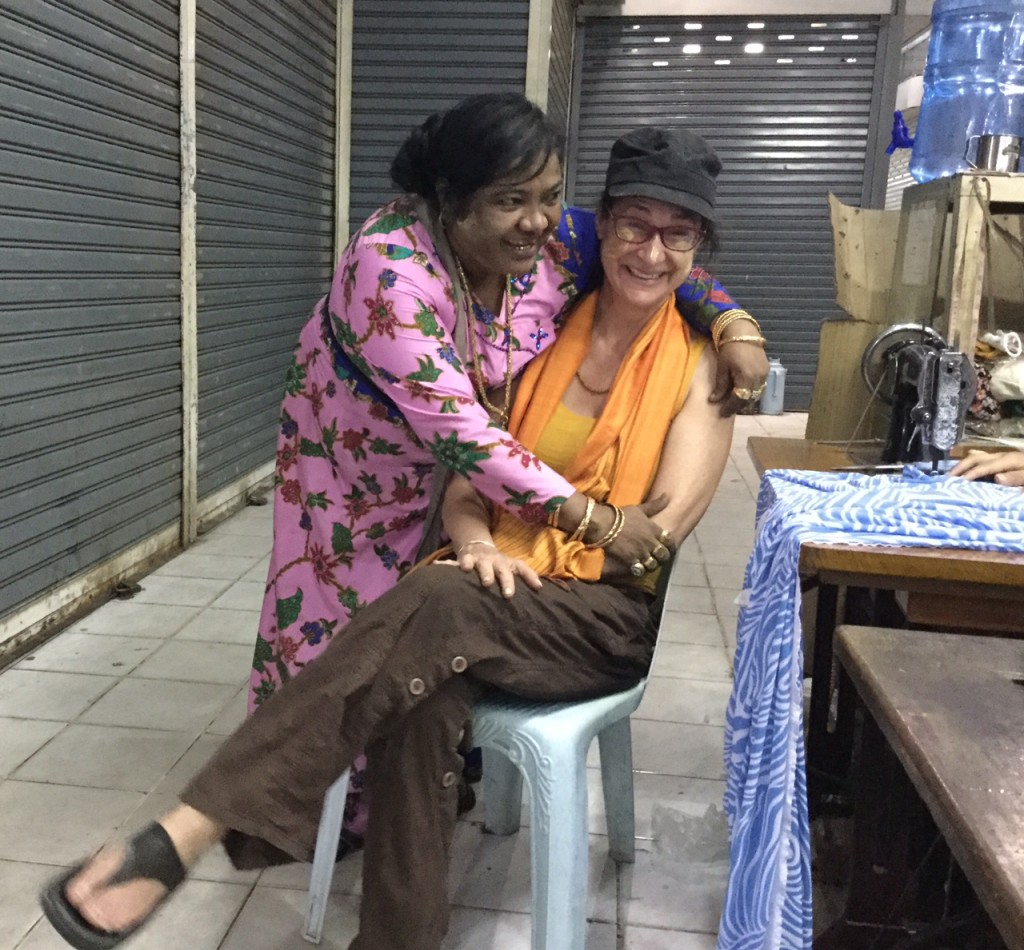
This woman is so delighted to see a foreign woman wear the Thank, that she surprises Peta with a big hug!
LAOS
Luang Prabang
This convergence of dress and environment is not always purposeful or conscious. In Luang Prabang, where a large population of orange-clad monks intermingle with the lay population, Peta started to subconsciously turn to the ubiquitous orange hue… No disrespect intended to the monks.
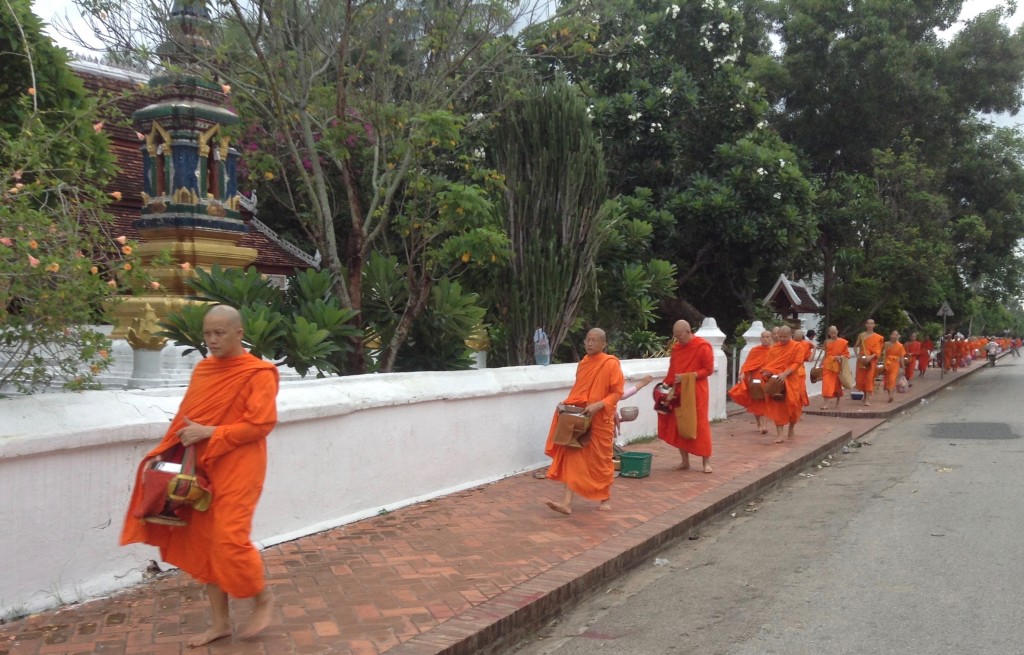
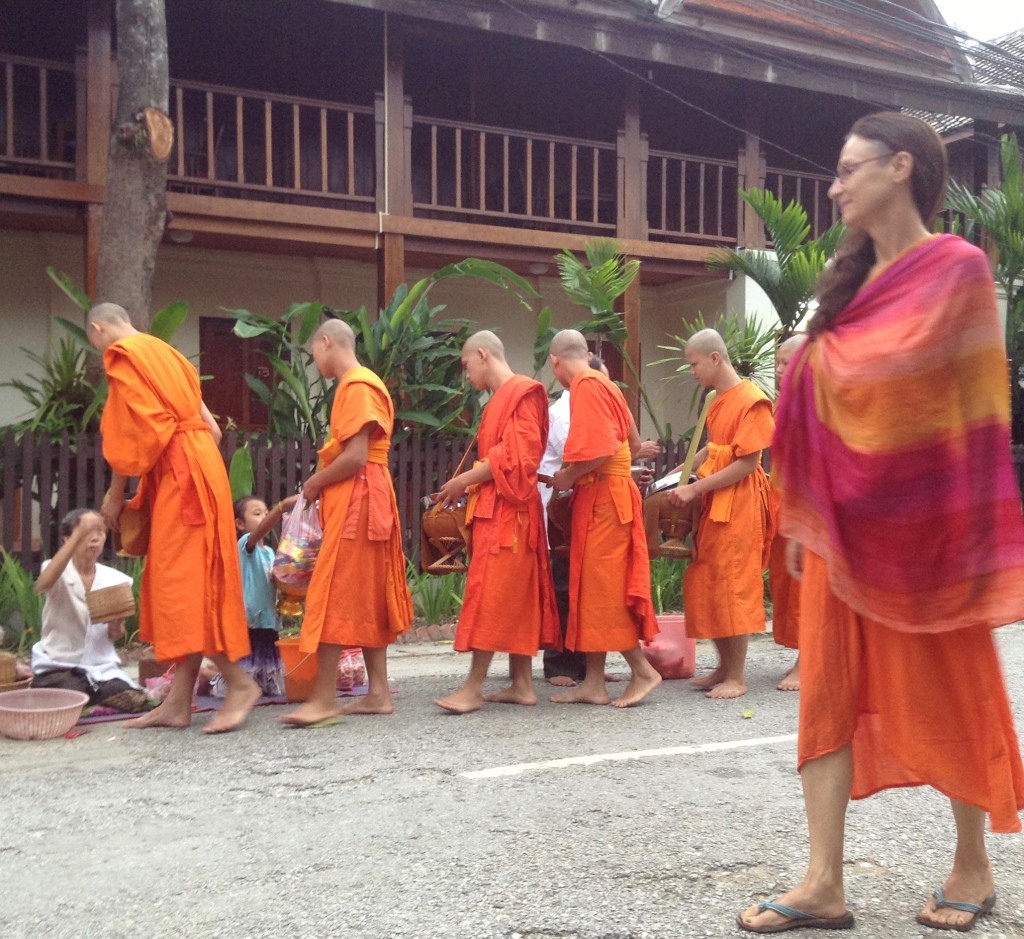
No disrespect intended, but she certainly “blends” in.
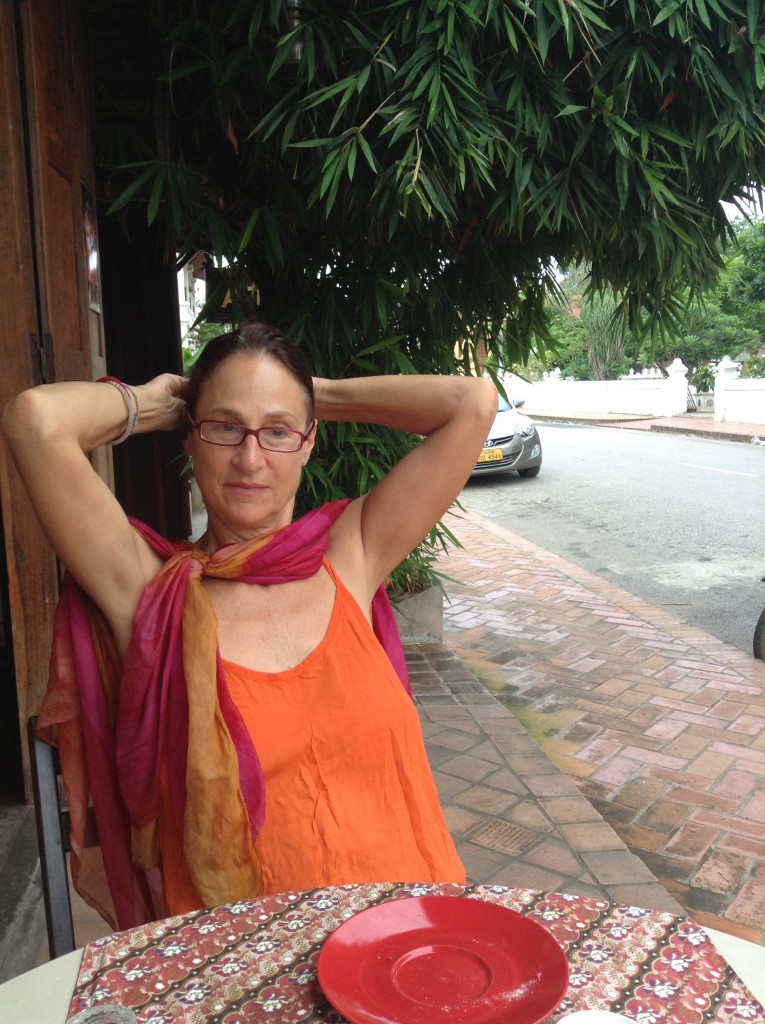
THAILAND
Bangkok
Something similarly unintended happened in Bangkok… the bejeweled Buddhist temples seemed to resonate with Peta’s pants and shirt, and vice versa.
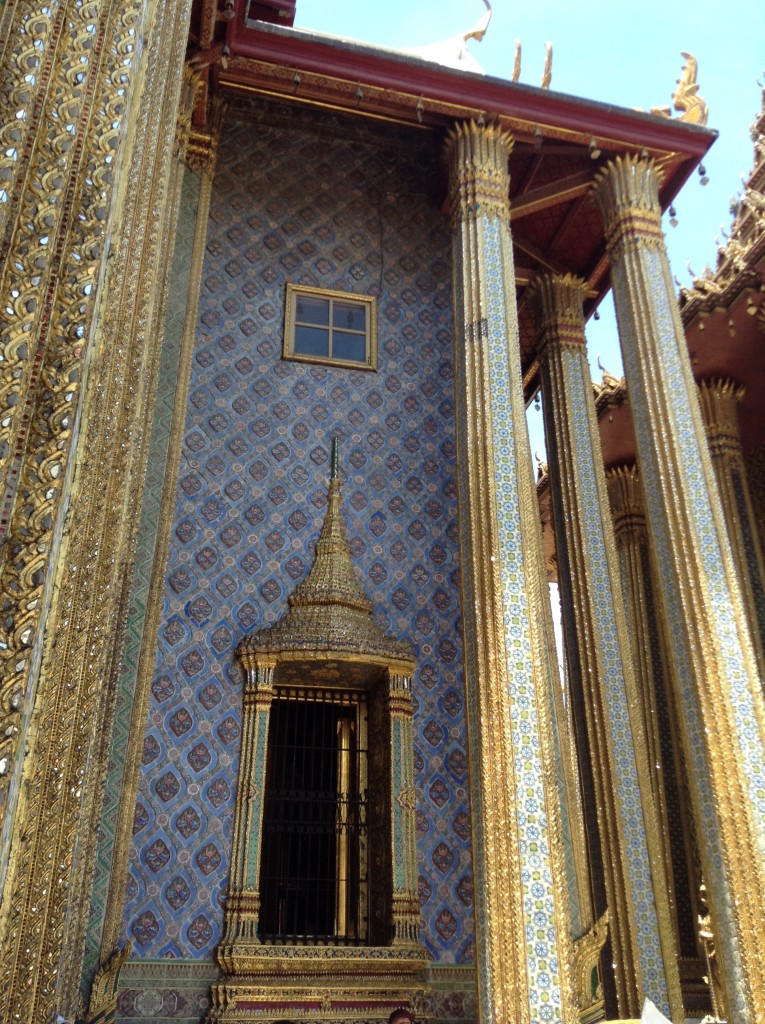
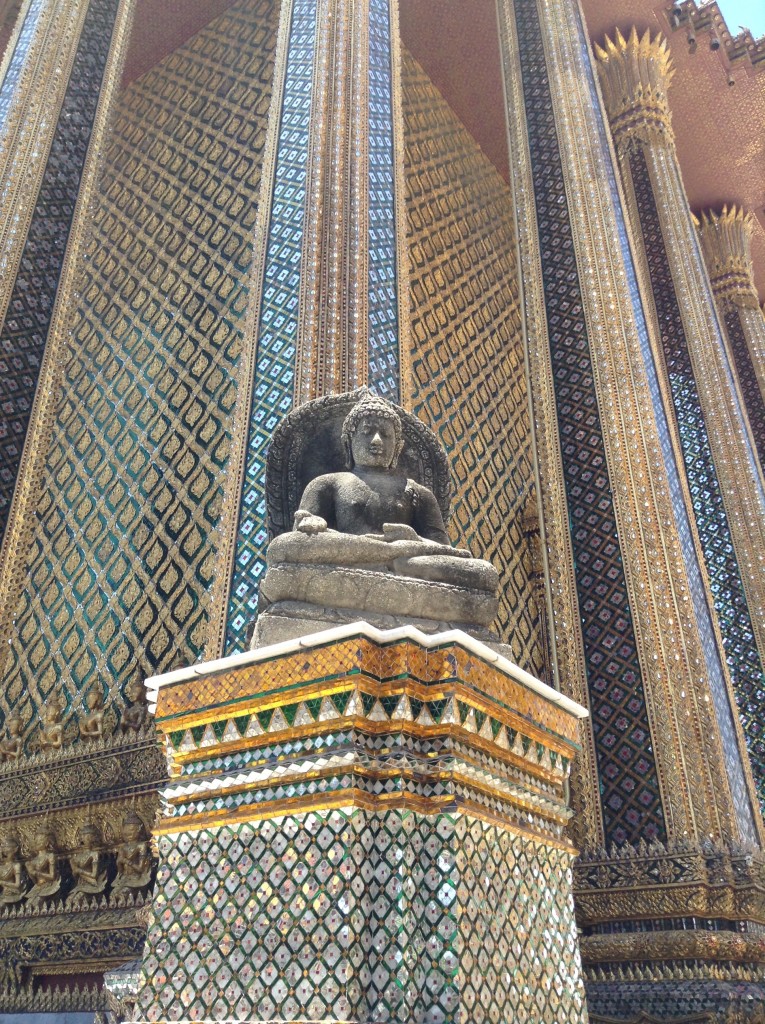
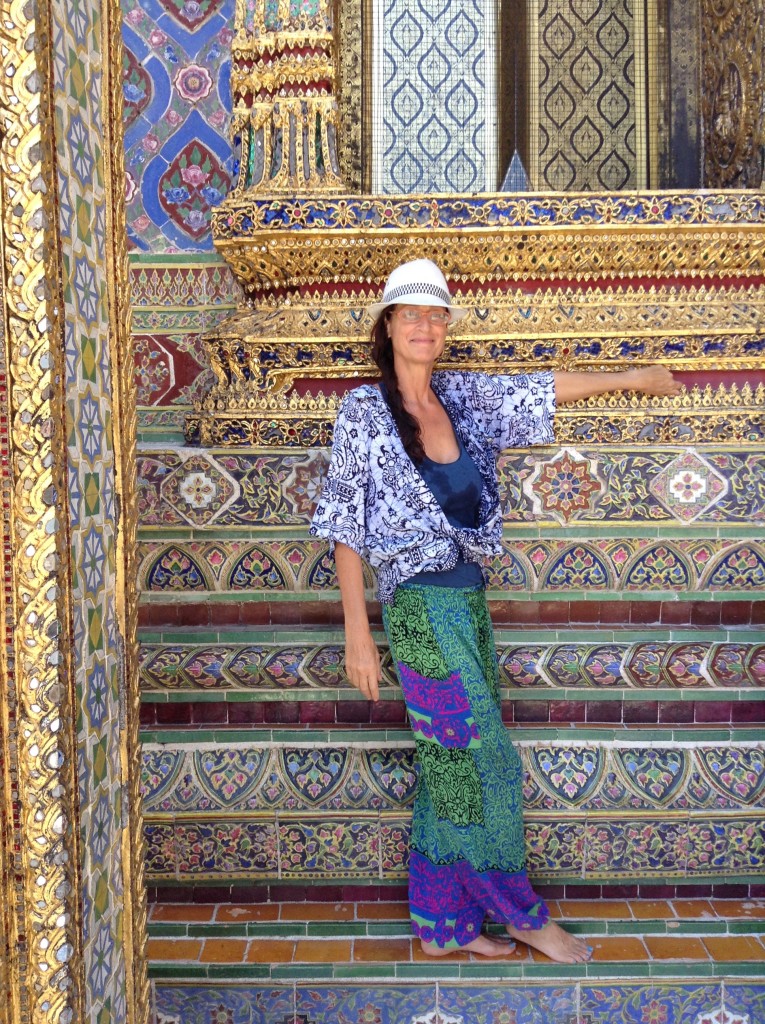
How did this happen? Peta’s multi-colored outfit becomes camouflage at Bangkok’s gorgeous temples.
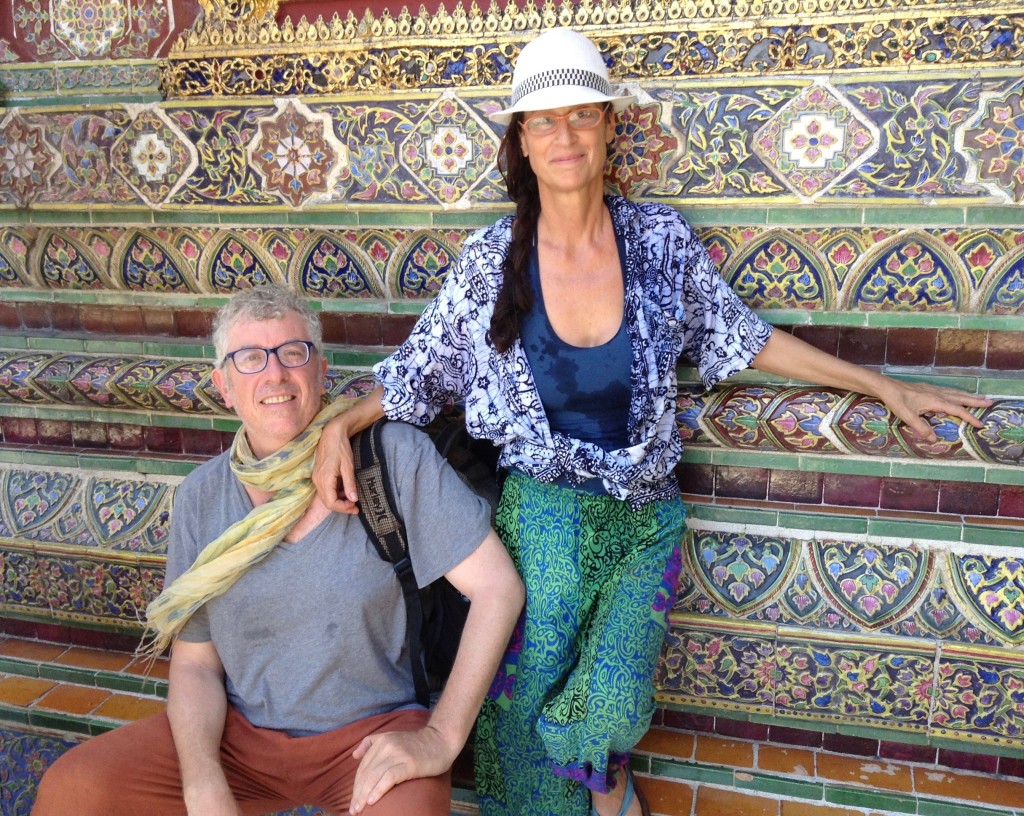
VIET NAM
Face masks in Viet Nam (as well as in other parts of SE Asia) are a part of the culture. Primarily worn to prevent skin darkening from the sun, and to a lesser degree for pollution from motorbikes.
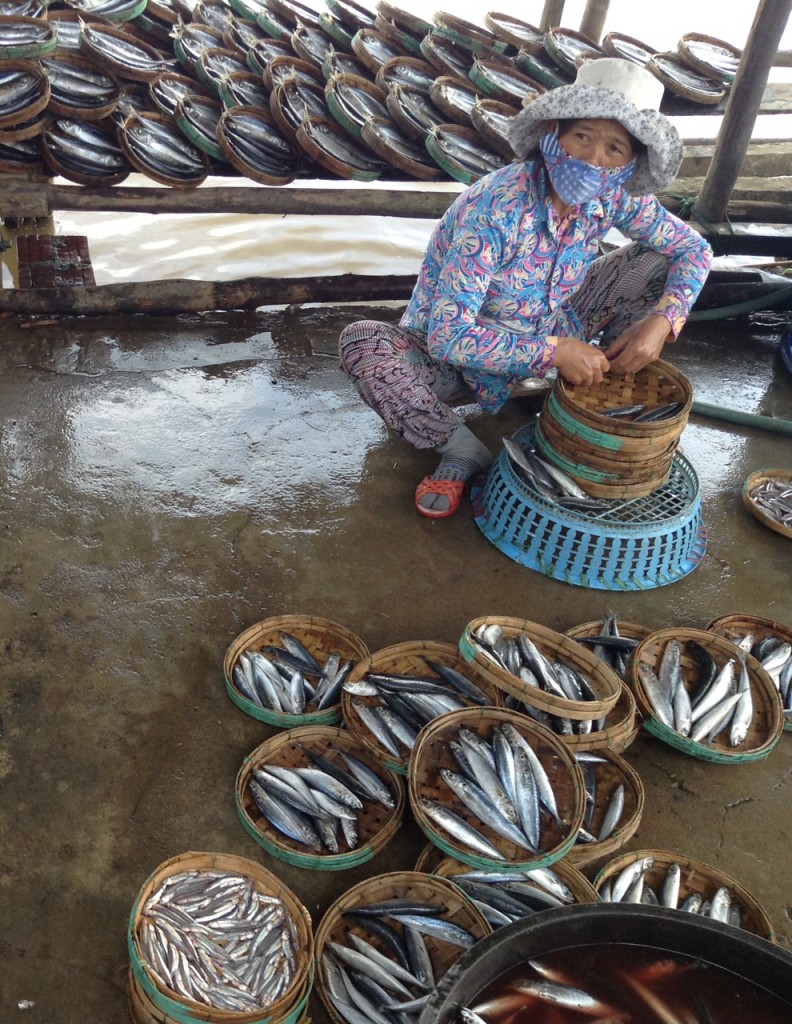
So normal and ubiquitous are face masks, that this woman cooking mackerel for the market, keeps her facemask on even though she is not in sun, nor in traffic.
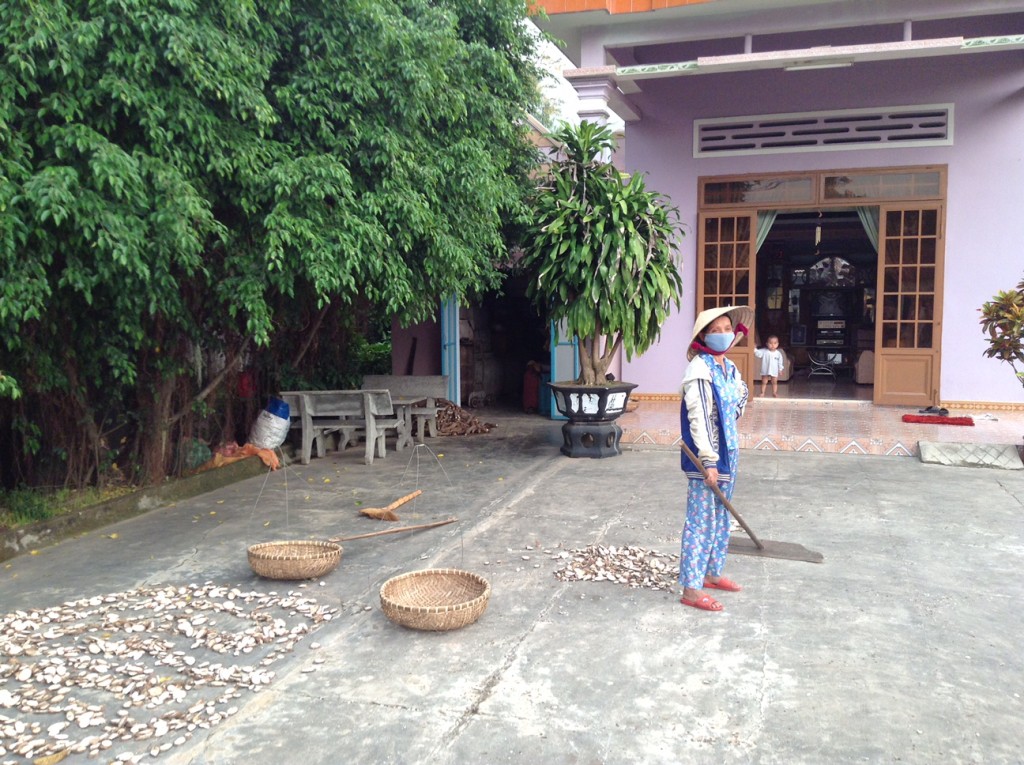
A rural woman sweeping outside her home where bark is laid out to dry, dons her facemask.
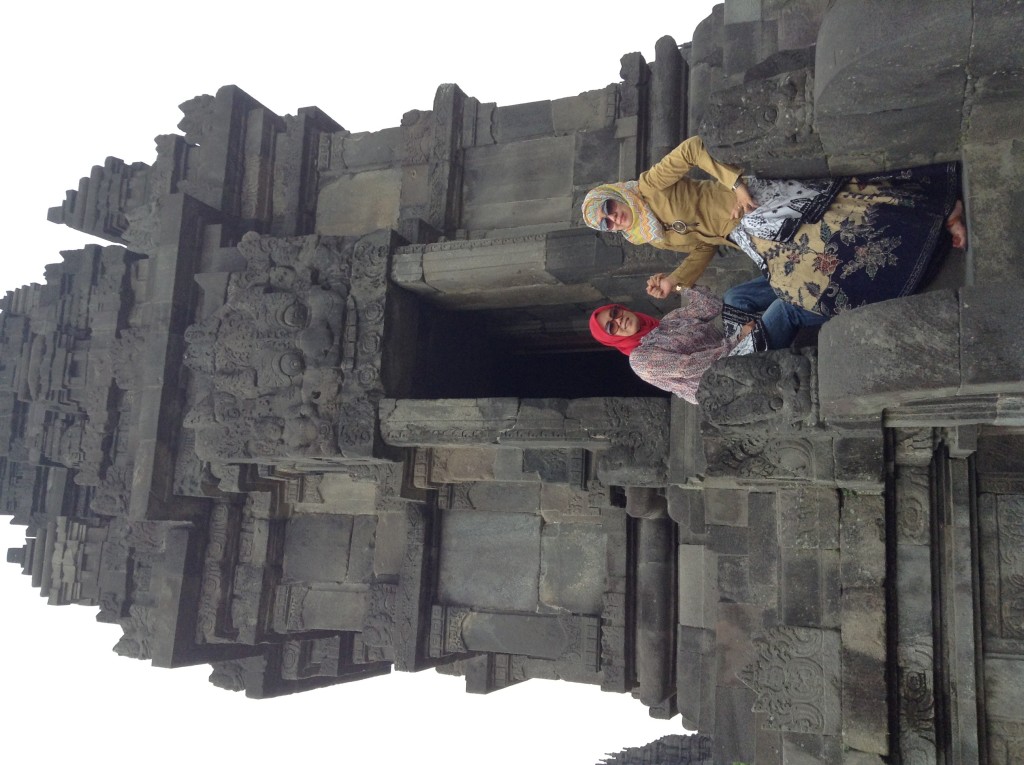
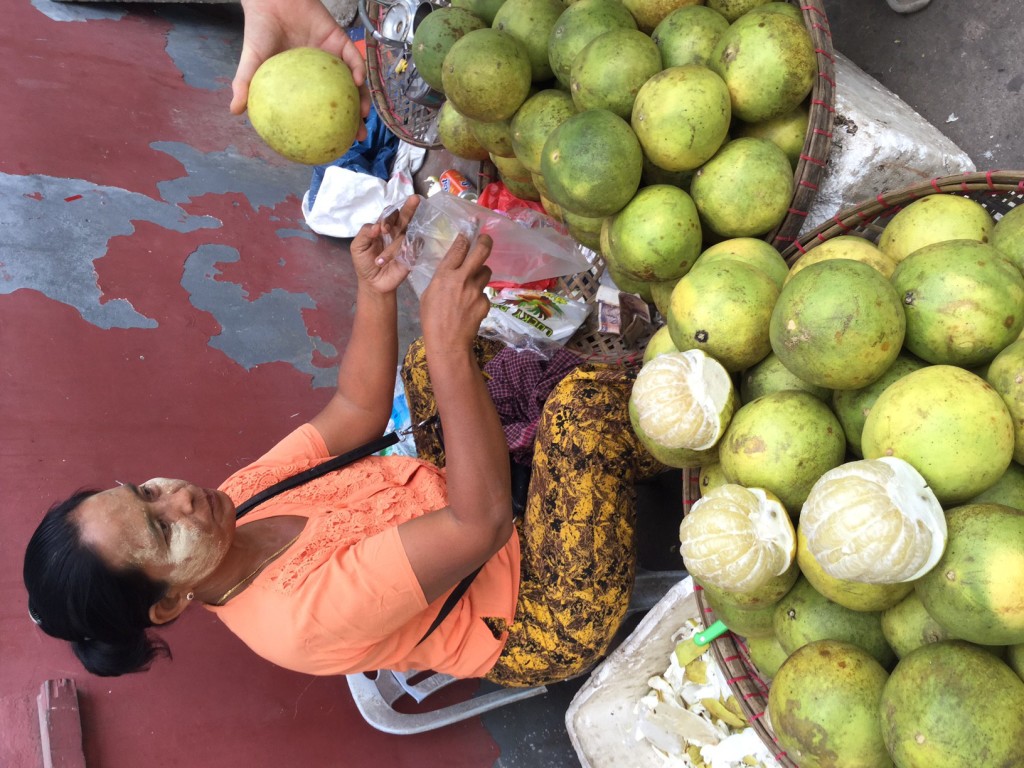
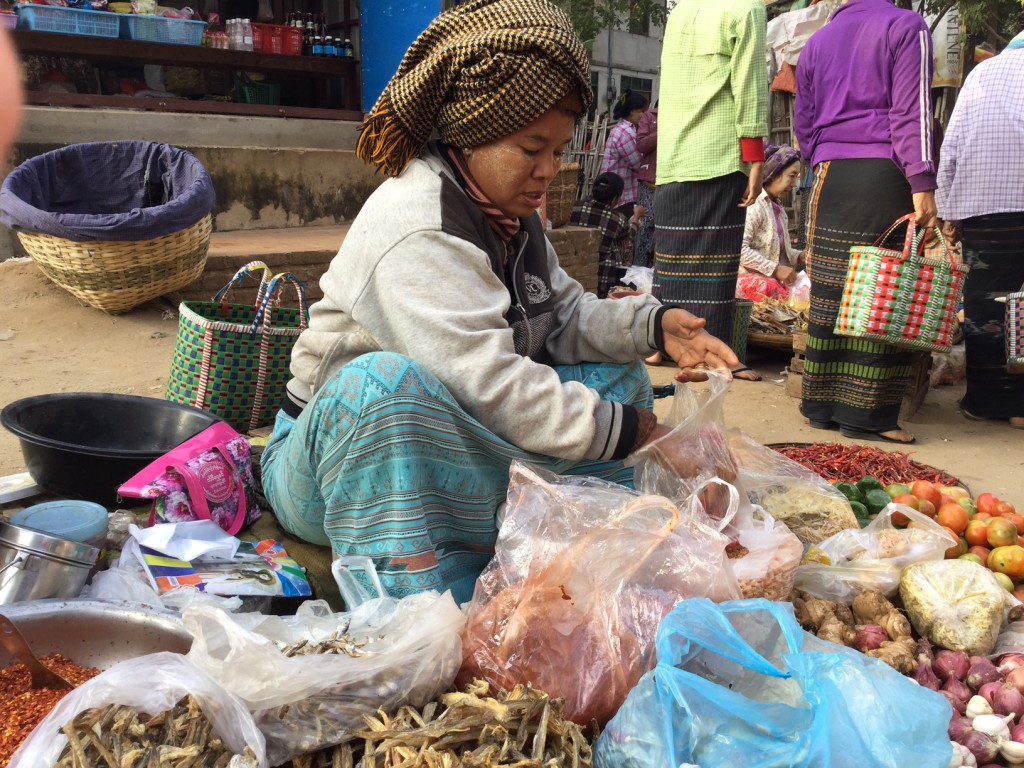
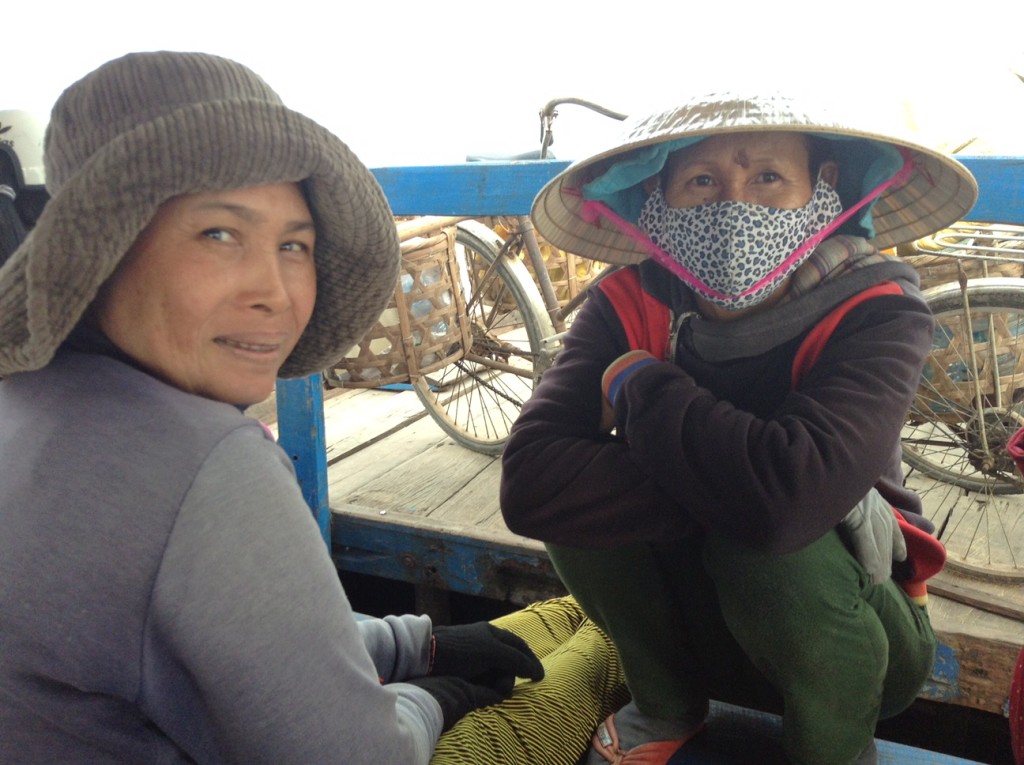
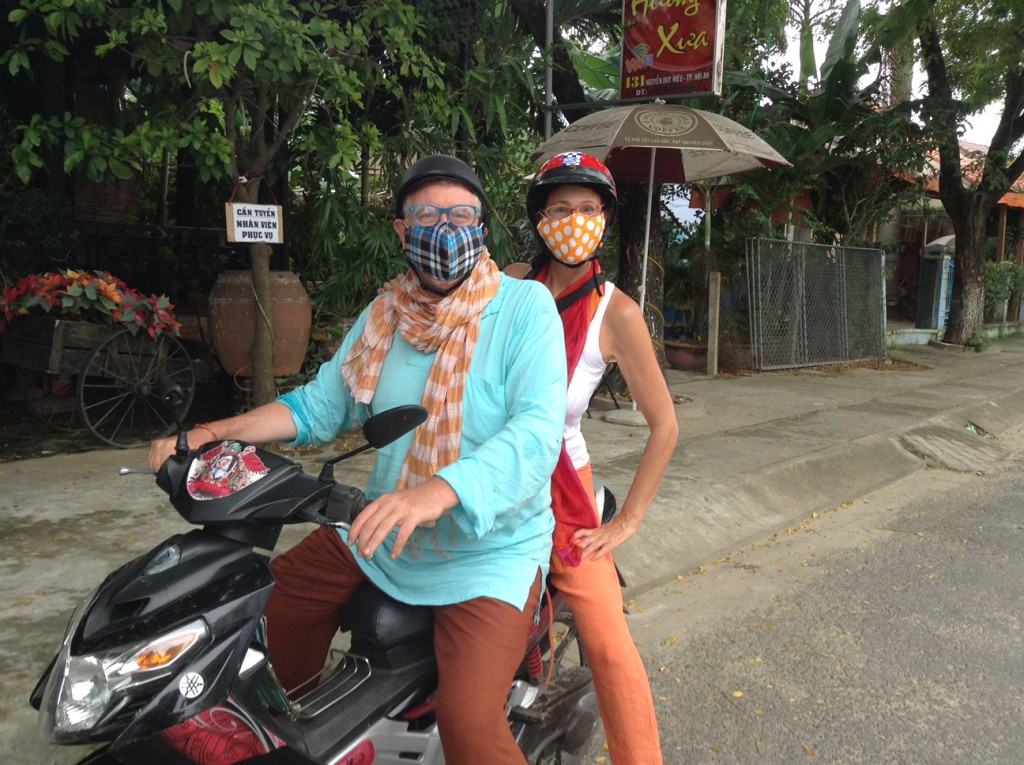
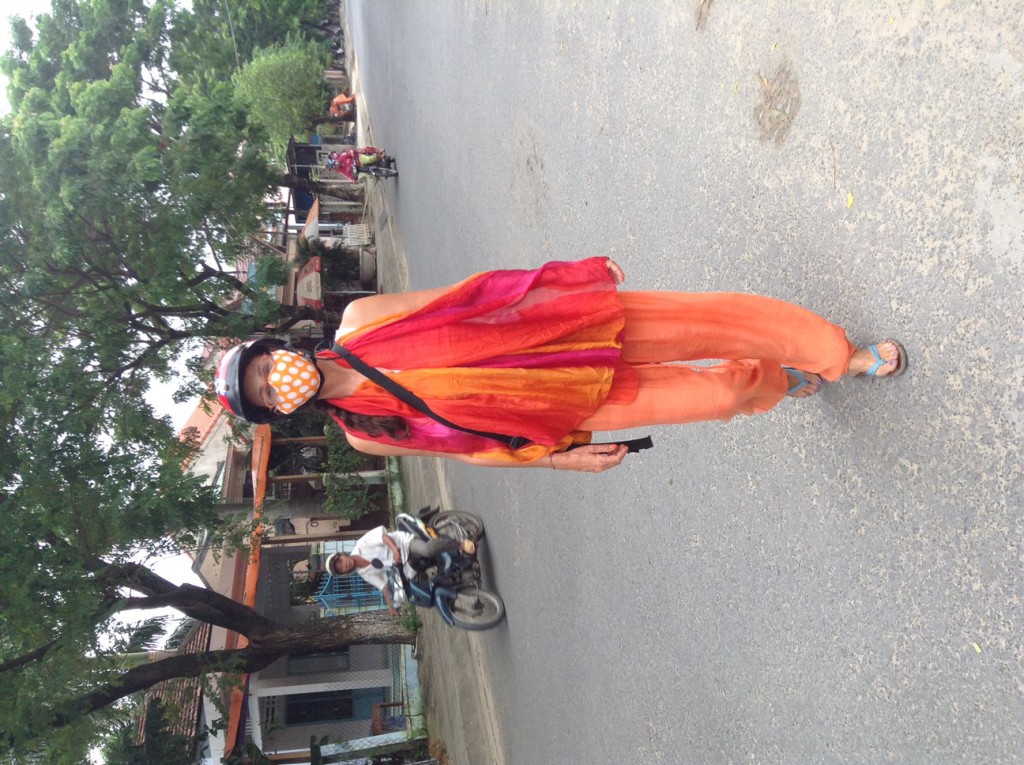
Peta, I like how you are both so willing to try the local culture, whatever it might be. A very different way of being a traveller, seeing countries and people from the inside out.
BTW, love the tiny girl in her thanaka – and fingernail polish!
Thanks Sharon.
The funny thing is, Westerners look askance when we dress local, but locals never do. Quite the contrary. They invariably reward us with their positive friendliness.
The little girl (with the thanaka) I actually thought was a boy, until I saw her cute fingernails.
Peta
You do have a wonderful tendency to blend in wherever you are 🙂 I’m willing to bet you have a lot more fun because of it too!
The one thing I did not know about though was about the face masks. I live in a very Asian neighbourhood and it explains so much!
Joanne it is definitely fun to get so many positive reactions by locals, as they seem to appreciate that we are willing to try things their way. It also is then very easy to initiate conversations.
The face masks are worn in many different Asian countries, but nowhere as prevalent as in Viet Nam, and nowhere as colorful and varied as in Hoi An. For example, in Japan, people wear plain white throwaway masks, compared with the fabric ones people use and reuse in Viet Nam.
Peta
I’m curious about the cultural expectations in the US around clothing. As it is easy to identify and question the requirements that people of other cultures are expected to follow and view it with fear or disdain (with the corollary of seeing yourself or your culture as “better than”), I am wondering what is present here in the States that is difficult to see because we are in it?
Paul, a few things come to mind…. Such as:
1) The adverse reactions that anyone wearing a hijab has probably experienced, and even more so, a burka. Or,
2)The cultural expectation about wearing bathing suits at most U.S.beachess,(whereas European women would naturally go topless in many countries. Or,
3)And this is the most shocking… The reactions, bordering on hysteria when a mother breastfeeds in public and has to hide in a toilet stall, for something so natural, and absurd given the amount of flesh seen in advertising everywhere.
Peta & Ben
Peta I so enjoyed this post and your willingness to be part of the culture you are living in. In each country you look joyous and comfortable. I learned a great deal from this post. I am wondering what you think of the women being fined on French beaches for wearing burkinis. I find the intolerance disheartening.
Thanks Sue.
We both think that the women being fined and the ban in general for women wearing “burkinis” in France is shocking. Ben is French and can rant for hours about the extreme French right which were created as a political trick to tap the worst of French xenophobia, much like Karl Rove created the tea party in the U.S. to tap that part of the electorate. The recent French ban is purely a way to placate the increasingly powerful extreme right politicians.
To be fair, overweight Western men wearing skimpy speedos should be equally banned and fined for exposing the rest of us to that sight.
P&B
Well, first of all, your camouflage outfit in Bangkok is spectacular! Stunning actually. I also loved the subconscious move into orange hues around the monks. I find this happens to me. After being around local styles or colors for a while, I start to crave that look, even if it is something I thought was not my thing at home. You are much braver and more daring (and more fashionable) than I, though!
Well, thank you! Bravery is an acquired taste.
Ben’s father was a French fashion designer in Paris and his mom had multiple fashion stores over many years. So he has been exposed to fabric, fashion and design his whole life. It must be in his DNA or something. I am quite happy and lucky to have him as my fashion advisor!
Peta
—Peta,
I love love love this post.
You are truly beautiful & I love how you blend into the ART.
I think we a ignorant in the west about the hijabs.
To us, it seems like a way to demean, belittle & dismiss women. ( I have a LOT to learn ) Obviously. Aren’t they HOT in all that fabric?
You are living your life to the fullest. HOW INSPIRING you are. How adventuresome!
PS. I REALLY dig monks. I think I shall be one some day!
Love from MN. xx
Thank you for all the lovely compliments. (You make me blush…)
I think you are absolutely correct re the ignorance in the West about hijabs and the supposed demeaning of women. While there may be some cases of this, in our experience, every Muslim women (in Sri Lanka, Indonesia, India) we discussed this topic with, was adamant that they wore a hijab and even a burkah (covering everything but the eyes) out of free will and out of respect to their religion and issues of modesty.
The objectification of women as sex objects which we are bombarded with via Western media is equally confounding to them and the narrative that hijab equals “control by men” is one that is mostly espoused by people in the West who have never had a personal interaction with a Muslim. Any time one has strongly held opinions about a cultural difference with which they have no first hand experience, should be an invitation to explore ones own biases.
P&B
Indeed, I’ve got a few muslim friends and I’ve learned a lot from them as well.
Usually, problem comes from the lack of understanding. However, as my mom would always love to say-
“Prevention is better than cure”.
We CAN prevent potential conflict simply by understanding. It all starts with a question out of curiosity, which may slowly lead to a kind of enlightenment into the life of the other party as they share their stories and experiences with us- Allowing us to personally live through it in our minds. Awesome. Just by attaining such “Ah-ha” moments, we not only gain a new insights into things, we’d have also gained a new connection with another human being as well as bringing about more peace and lesser conflict!
Keep up the good work, Peta and Ben. Your photo with the monk was really funny hahah! Really epic outfit matching at the temple btw 😉
Keep up the awesome spirits!
Your pal,
Benjamin
http://www.projectbiy.com
Thanks for all your interesting feedback Benjamin!
One of the very BEST features of travel that both of us cherish is having real connections, real moments, and conversations with locals, which are not limited to buy/sell transactions that occupy the great majority of Western travelers interactions with locals.
Neither of us are shy, and are both inclined to be curious as well as easily strike up conversations with people we meet wherever we go.
So glad you like the photo with the monk, we lived in Luang Prabang, Laos for about a month and could have easily stayed longer. IN fact we seriously considered that as a future home base, but looks like Viet Nam and Sri Lanka won out. However, we do hope to get back there for more time. We had some good friendships with young monks whose temple was across the road from where were living.
Best,
B&P
I found this post very interesting. I’m so impressed with your ability to blend in with your surroundings. I was about to say you are something of a chameleon, but that undersells your abilities. I’d like to see a chameleon become completely invisible while wearing a deep blue top, torquoise pants and a white hat.
Bun… Chameleon like, I like that.
It doesn’t change the fundamentals about who the chameleon is, only the outside appearance.
P
Linda B:
Fascinating posts, Peta. You write beautifully and I love the photos! I admire both of your adventurous spirits and willingness to try on (literally!) the cultures within which you’re living.
Happy travels. Love from S and me.
Linda
Thanks Linda.
xoxo
P
Wow..the thailand photo of you Peta is outstanding…you really know how to put an outfit together. That is one of my favorite things to look at in your photos are your outfits. Stunning…about to go buy a facemask right about now. Great post!
Aw thanks Brook. I give partial credit to Ben for being my fashion “consultant” (an enthusiastic audience.)
P
What a terrific post; very enjoyable reading! I couldn’t agree with you more about the needless hysteria over the hijab. You guys should be featured in a fashion magazine…you look awesome even in face masks!
Thanks Caroline.
Okay you fashion editors out there, you heard it here first.
I actually really like wearing a face mask as germ and sun protection, but of course in the U.S that is yet another thing that is culturally frowned upon.
(Wearing a face mask while on an airplane helps to deal with the recycled air that is full of other passengers germs, makes infinite sense.)
I just LOVE this very informative post. The photos are delightful! Lucky you! Now lucky us!
Linda
Thanks Linda.
I love going native during travels. Looks like you are getting really immersed in the culture. I did not know about the different styles of Hijabs. Very educational and informative writing. Now I want to travel there!
Thanks Mark.
I like that… “going native.” Good description. South and South East Asia are so rich with culture, religion, languages, foods and of course, complex histories.
Peta
I’m sure that blending in would afford you a better perspective on a particular culture than being the average tourist as it demonstrates a willingness to fit in-Love it!
You got us pegged.. we are definitely not “the average tourist”. We travel slowly and try to spend extended time in a few places rather than rush all over, checking the box. This approach allows us to get deeper than if we were just “passing through.”
Peta
You always look fabulous in your native wear. All that’s missing from your Laos attire is a shaved head. 😉 I have sported a babushka from time to time, but it’s (sadly) going out of style in these parts.
Well thank you!
I considered the shaved head, but Ben likes long hair, so that seemed like it might be counterproductive 🙂
You and Ben are truly citizens of the world. I love how you embrace the cultures that you visit and make the world a little more accessible to us through your posts. Love the humor in this post as well 🙂
Lisa, that is compliment indeed!!
Especially, coming from a global traveler, adventurer that you are!
Thank you.
Peta